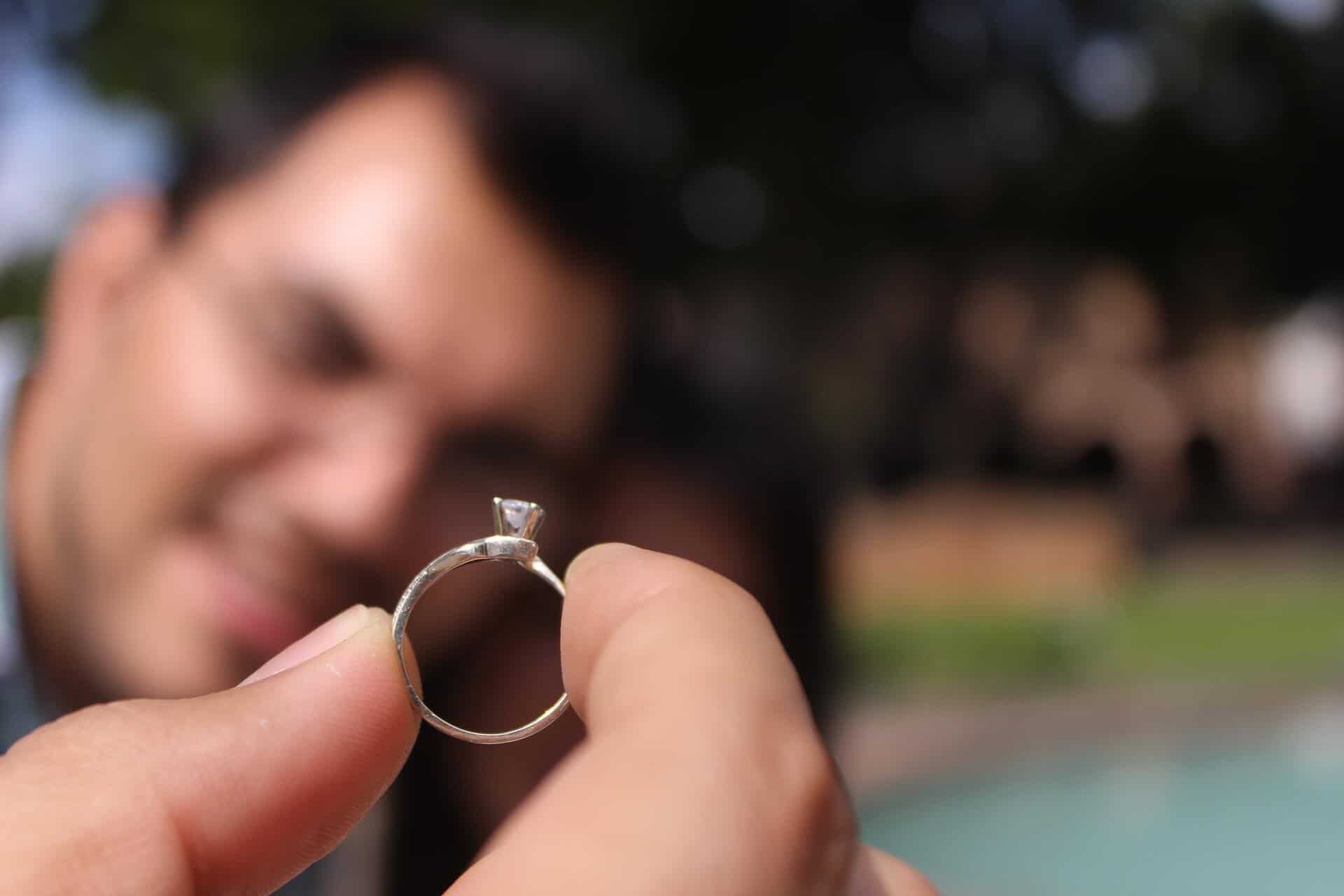
Table of Contents
As Jewelry Shopping Guide editors, we write about things that we love and we think you’ll like too. We often have affiliate partnerships, and may generate some revenue from these links at no cost to you.
When it comes to engagement rings, the most popular metal choices are gold and platinum, as they are valuable, durable and stunning in appearance. Both white gold and platinum have a sleek, modern look and are ideal for contemporary engagement and wedding ring designs. However, there are significant differences between these two metals in terms of composition, price, durability, purity and even appearance.
Let’s break down the differences between white gold and platinum and check out which might be better suited for your ring.
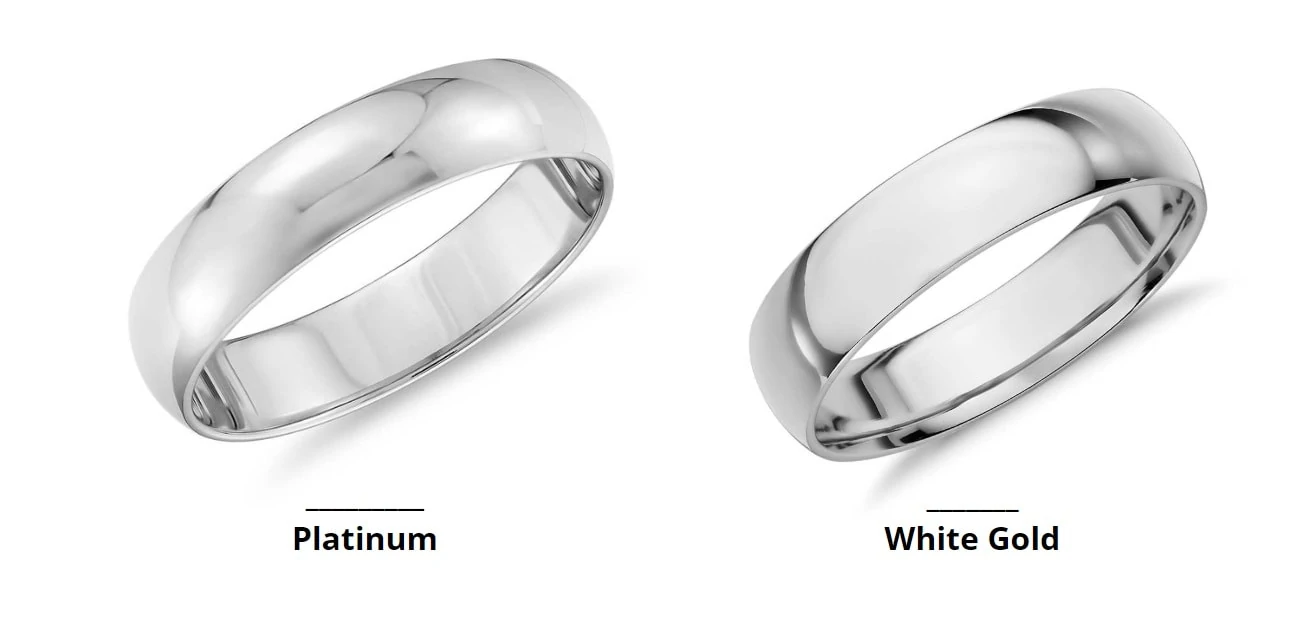
White Gold vs. Platinum: Purity
First things first, you will rarely find a ring made of 100% pure gold or platinum. When used in jewelry, these metals are alloyed with other elements to create a more durable, workable metal. Most platinum alloys contain between 85% to 95% pure platinum, with the rest made up of metals such as copper, palladium and cobalt. Any alloy with less than 80% platinum is not considered platinum and cannot be marked with the platinum stamp.
White gold alloys, in comparison, have a lower percentage of pure gold. 14K white gold only consists of 58% pure gold while 18K has 75%. The rest of the alloy is made up of metals such as silver, copper and nickel.
Why is purity important?
The difference in the percentage of purity is one reason platinum is much more expensive than white gold. Put simply, there is more precious metal in platinum alloys than there is in white gold. The other metals that complete the alloys are not valuable and their impact on the overall price is negligible.
Going back to white gold alloys, the percentage of the metals used in the alloys can affect the resulting color of the white gold. It also enhances the durability and strength of the gold, making it suitable for lasting pieces of jewelry.
White Gold vs. Platinum: Hypoallergenic Properties
Platinum is bio-compatible and does not cause reactions for people who have metal allergies. It’s a safe option if you have skin sensitivities. While pure gold is also hypoallergenic, white gold may sometimes cause allergies due to the metals, such as nickel and zinc, that may be present in the alloy.
The best type of white gold is an alloy of gold, silver and copper and is hypoallergenic.
If you have metal sensitivities and are planning to purchase white gold, ask your jeweler about the metals in the white gold alloy before you buy.
White Gold vs Platinum: Color
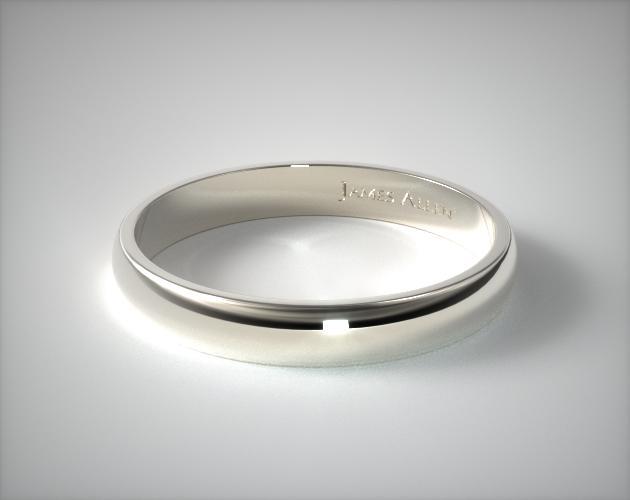
Both platinum and white gold are silver-hued metals, but one is natural and the other is created.
White gold is not a natural metal. There is no such thing as a white gold ingot found in nature. Instead, it is yellow gold that is mixed with other metals to create a yellowish-whitish metal. This is then plated with the highly reflective metal, rhodium, to give it a lustrous finish.
The problem with white gold is that over time, the rhodium can flake off or wear out, causing the yellowish ‘white’ gold to bleed through which can make your white gold ring appear dull and discolored. To solve this problem, you will have to have your ring re-plated every 6 to 12 months to maintain its sleek shine.
Platinum, on the other hand, is a naturally white metal. When polished, it is smooth and shiny. Although it is a very durable and strong metal, platinum does acquire scratches over time.
Platinum vs. White Gold: Scratches
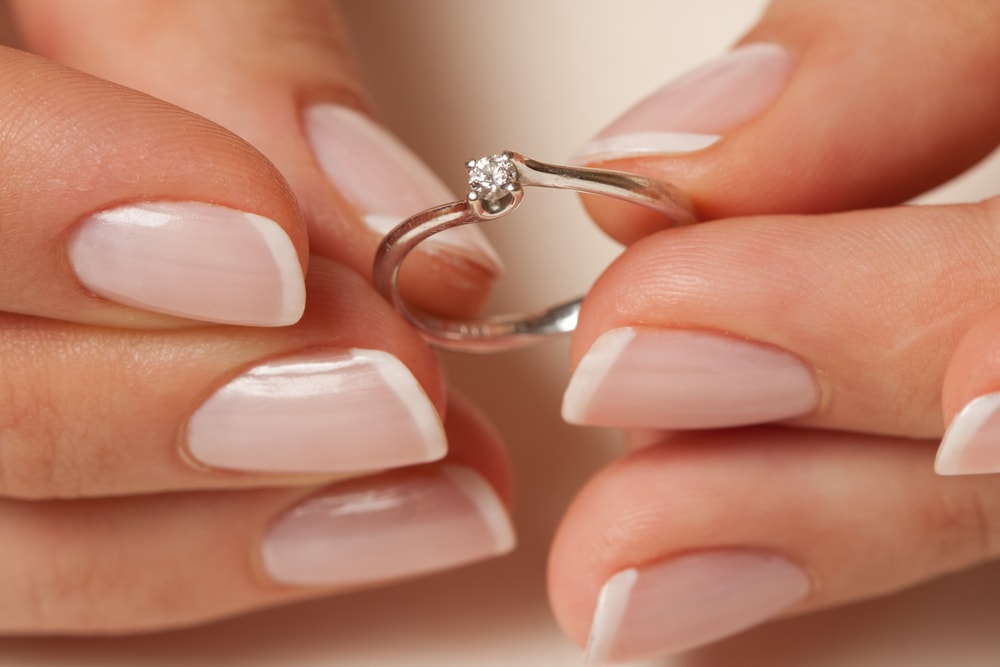
There is a difference in how platinum and white gold react to scratches. When white gold is scratched, it leaves a little bit of itself on the object that scratched it and acquires a slight groove on its surface. Platinum, which is a more malleable metal, tends to displace itself when scratched, making way for the groove.
How does this affect your ring?
Over time, platinum does not wear thin. The platinum ring will continue to retain its metal whereas white gold will wear down. However, platinum will gradually acquire a matte texture and dark appearance, which is known as a patina.
This occurs due to the way in which these miniscule scratches react with light. Some people love the idea of a patina as it tends to add more character to a ring. However, for those who prefer a smooth, shiny look, the ring will need to be professionally polished to be restored to its original luster.
Now, although these are both white metals, white gold is actually more reflective and shinier than platinum due to its rhodium coating. Comparing a white gold and platinum ring side by side will help you to decide which color you prefer.
White Gold vs. Platinum: Density
Platinum is a very dense metal and much heavier than gold. Platinum is about 60% heavier than 14K gold and about 40% heavier than 18K gold. So, if you have a ring made of 18K white gold and an identical sized one made of platinum, the platinum ring will be almost one and half times heavier than the white gold ring. Because you pay for these precious metals in ounces or grams, it goes without saying that the heavier ring will be more expensive.
In terms of comfort, a platinum ring will feel heavier than a white gold ring. While some prefer the solid, substantial feel of platinum, others may opt for a slightly less heavy white gold ring. There is no right or wrong here as it totally depends on individual preference.
White Gold vs. Platinum: Price
On the market (as a metal), platinum and gold are roughly around the same price, although this fluctuates. However, when made into jewelry, platinum pieces are often more expensive than white gold. Compare this platinum matte classic wedding band with this similar matte white gold wedding band. The platinum ring is almost twice the price of the gold ring.
Here are the main reasons platinum rings have typically been costlier than white gold rings:
- Platinum is rarer than gold and is mined in only a few locations around the world. It is said that all the platinum ever mined could fit into one large room.
- Platinum is much denser than gold, so a piece of platinum jewelry will be heavier than gold jewelry of the same size.
- Crafting jewelry from platinum requires specialized tools, higher temperature levels and greater expertise. All these add to the cost of the jewelry.
- Platinum jewelry are often 95% pure, while gold jewelry is almost always under 75%. You’re paying for amount of platinum in your ring.
In short, white gold is a more affordable option and is great if you are on a budget. Also, in terms of investment, gold (whether pure or alloy) is considered a wiser choice because it is traded more widely than platinum.
White Gold vs. Platinum: Ring Settings and Prongs
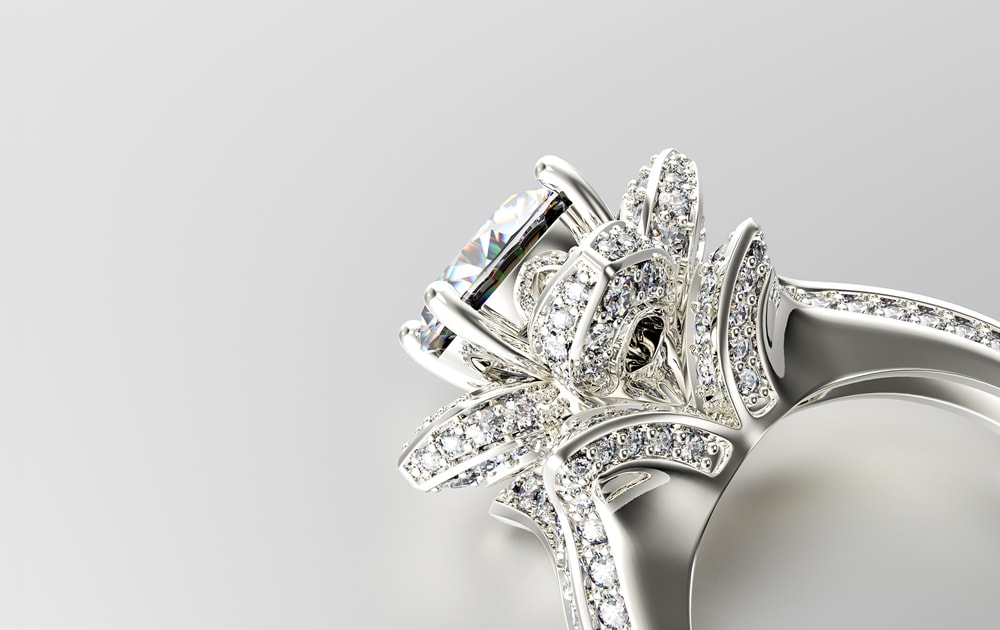
Gold in its pure state (24 karats) is a very soft, malleable metal that is not recommended in the use of everyday jewelry. However, when alloyed with other metals, it becomes much stronger and more durable. Platinum is a very strong metal and is ideal for everyday jewelry.
However, these two metals are not similar in their durability. Platinum is more malleable whereas white gold is more brittle. Platinum reacts to impacts and knocks by bending and giving way, while white gold won’t bend but may crack if dealt a hard-enough blow.
How does this affect a ring setting?
When a white gold ring is struck, the prong may resist the blow, crack outright or weaken. If the last two occur, the gemstone will be in danger of falling out if the ring sustains more blows. If a platinum ring is struck, the prongs may bend, move or flatten out. This can cause the gemstone to slide out of the mounting.
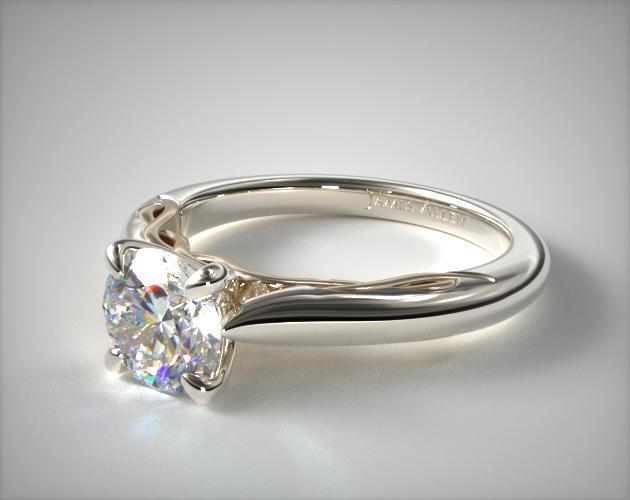
Bear in mind that these are not common scenarios and are more likely to affect small prongs holding tiny diamonds or accent stones rather than larger prongs in, say, a solitaire setting.
One benefit of platinum is that it does not wear down. Everyday rings, such as engagement and wedding rings, are exposed to a lot of rough wear, hard knocks, chemicals and heat. Over time, the prongs of the setting will need to be replaced or re-tipped to ensure that it continues to securely hold the gemstone. Platinum is able to resist such wear and tear for longer.
Because of its strength, platinum heads don’t wear thin or deteriorate with time. The prongs will continue to hold the gemstone steadily in place for longer, reducing the risk of the diamond falling out. White gold, on the other hand, will wear down over time and will require prong re-tipping sooner than platinum.
To be safe, have your ring checked by a professional at least once a year to see how it is holding up. The last thing you want is your diamond falling out of a loose setting. Also, if you lead an active lifestyle, platinum is probably the better choice for you. It can resist exposure and rough wear much better than white gold.
In terms of shine, a white gold ring will retain its luster longer than a platinum ring. If you are after a sleek, shiny look, then white gold is probably better for you. It also accentuates the sparkle of a colorless diamond and makes for a stunning combination. On the other hand, while a platinum band dulls quicker and appears darker, this provides a beautiful contrast to a diamond, which some people prefer. Consider these factors before you decide on your ring metal.
Servicing White Gold and Platinum Rings
You may find that it is easier to have white gold rings repaired, polished and resized than platinum rings. This is because white gold is easier to work with and is more commonly used by jewelers. Platinum requires a higher level of skill as well as more specialized technology and tools. Servicing platinum rings may cost you more due to these reasons.
Which Metal is Right for Me?
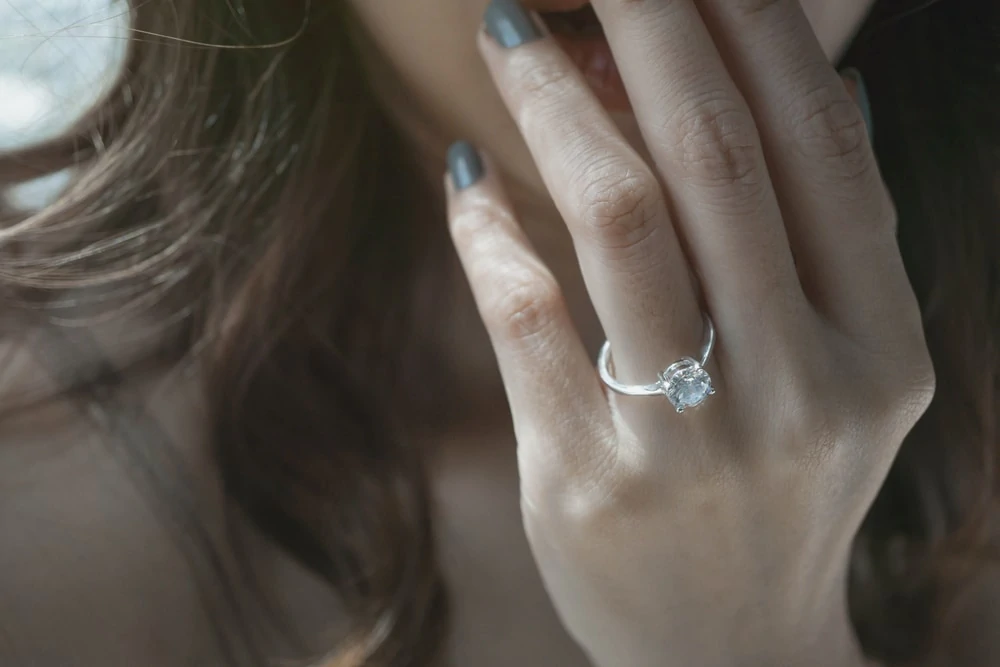
Whether you choose white gold or platinum depends on your preferences. Both metals look very similar are good choices for engagement and wedding rings. White gold became popular as a more affordable alternative to platinum and this is the significant point of difference between the two metals. If you want the look but not the price tag, white gold is a great alternative. Both are timeless, prestigious choices and are suitable for heirloom-quality rings. With proper care, white gold can last through the ages just like a platinum ring.









